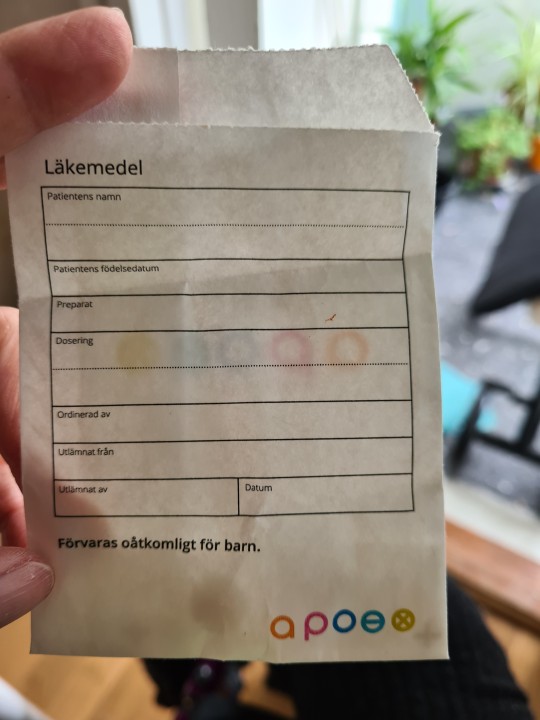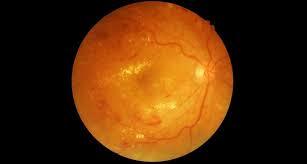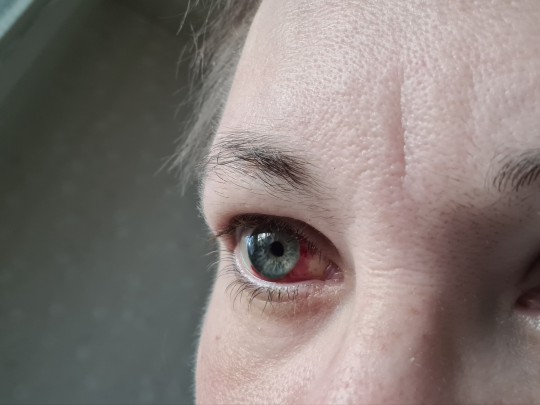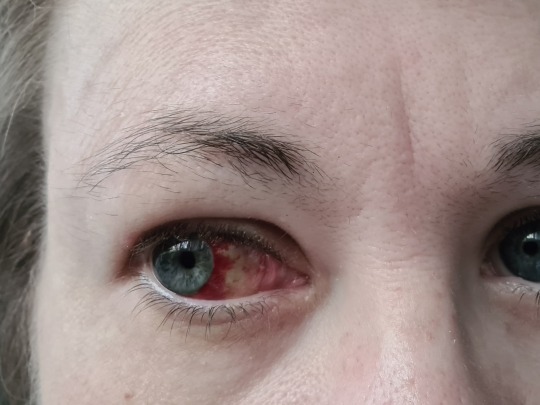#diabetic retinopathy
Text
The day I lose my sight for good, is the day I leave this world for good.
I’d rather be dead than be unable to write a thing ever again.
Now that’s the risk, now that it is right in front of me. Once I do this test and get the results on my eyes then it’s all either downhill or rock bottom for me.

#mental health awareness#mental health#blog#all alone#no one wants me#no one likes me#fake friends#fake people#if I can’t write then I don’t want to be here#writers#writerscorner#I’d rather be dead#blind#going blind#diabetic retinopathy#all thanks to the NHS#NHS scum
8 notes
·
View notes
Text

Farewell, shitty Jason Voorhees cosplay!
And hello... particularly fucked up SFX sclera lens?

(Was actually putting off looking at it until after getting home. Already more than enough to process. They did warn me it was super bloodshot, but I still wasn't quite prepared for...that. It's basically bruised all to hell, as the nurse was saying today. She seemed half-surprised that I didn't have a shiner to go with it. Gruesome enough for the moment, as it is.)
Yeah, at that followup appointment this morning, basically the first thing the nurse did was take that thing off. And thankfully clean up around my eye safely!
Which I was definitely going to ask about, if they hadn't mentioned it straight off the bat. It was feeling really itchy and soggy under there, and finally getting the thing of my face was such a relief. Not to mention wiped off. I'm apparently good to go with a damp cotton pad as long as I don't press hard or, like, squirt shower water straight into Recovering Eyeball for a while. (And pretty obviously keep shampoo, etc. out of it.) Other than that, it should only need the extra-gentle treatment for about a week.
There is definitely more light getting in, for good or otherwise right now. I can make out larger shapes much better, and actually see if somebody is holding a hand up in front of me. The post-surgical blurriness is evidently from the gas, and should gradually start improving over the next few weeks as the gas gets absorbed. With some annoying visual effects developing from the bubble floating around as it shrinks. Doesn't sound like it could be worse to live with than what Haunted Eyeball has been pulling so far, but we'll see.
Don't want to get overly optimistic, but it did indeed sound like I should hopefully be able to get decent vision back in there. Again, we'll have to wait and...see? Pls?
That would be enough of a change with the lens implant and all, that I am definitely going to be needing new glasses ASAP regardless. Again, no idea how long that might take to stabilize enough. Will likely be going around severely lopsided (with the damned migraines! 💀) for at least a couple of months. Which also isn't really sounding like much change from the near-constant varying level migraine situation right now, but hey. Not looking forward to more of this shit--maybe especially after spending years like that for other reasons (celiac deficiencies screwing up my electrolytes), and finally getting that shit mostly stopped for nearly as many years before this started similar up again. 😬
(In other news, I finally got a brainstorm to try some hopefully appropriately tinted clip-on filters, and see if it helps. I know I do seem to be one of the migraine folks sensitive to cooler wavelengths. Rather than going around most of the time inside the house wearing the polarized likewise convertible shades to block some glare. May need to mess with ordering some from Brexit Island and risk Customs hangups, because I could find several suitable-looking FL-41 options there. Where those were apparently developed and the tinted lenses first used for migraine prevention. 🙄 Not much luck from Germany with clip-ons to use with existing glasses specifically, though that's frequently my first choice now. Much bigger country with more stuff available than here in Sweden, inside the Customs union--and, I can still get by well enough in German to even figure out what magic words might work for searches!)
Anyway, that eye was even more nearsighted, etc. going into this whole mess, and however it stabilizes with the new aftermarket lens? That is liable to make me pretty sick and headachy,cgoing around with a pretty strong absolutely wrong prescription in the meantime. Worst case, I guess I can pop that lens out of my existing glasses and see if uncorrected is less awful? But, we'll have to burn that particular bridge when we come to it.
I'm just pretty relieved to even be able to see someone waving their hand on that side now, tbqh.
The less good news: I get to go back tomorrow! 🙃 Not in the already planned like week and a half.
I also got two more kinds of eyedrops to use more temporarily! For a total of five (5)!

The guy who ended up prescribing the new additions actually scribbled down a full list for me to take home, with the dosing schedules laid out.
Yep, including one that's conveniently called for 5 times a day! 😬 The first horribly frequent one is a steroid with a tapering dosing schedule. Guessing that may be why he missed another one of the initial three prescribed yesterday. I'll figure it out from the labels, and alarms will no doubt be set up. Hadn't been needing to use that pill scheduling app since before we moved here, but I guess it's time to reinstall the sucker!
The issue? The pressure in that eye was registering at 32 mmHg, when it should apparently normally be 10-21. Not totally unexpected with the swelling and all--to the point that they wanted me back the next day after surgery mainly to check pressure. Doesn't sound like this is panic-level high, but enough to try and get it down ASAP to recheck tomorrow.
Thus the extra double header of glaucoma drops, to hopefully bring that shit down. And they had me take a couple of diuretic tablets before I even left the office. Which I then proceeded to MacGyver into a swallowable form, using one end of my pocketknife as a pill crusher and a handy Ziploc with some hypoglycemia backup candy hastily evicted to contain the shrapnel! It kinda worked, even if the doctor was looking on rather apologetically with nearly equal parts fascination and surprise. (After shuffling around to find some hopefully suitable bludgeon, not very successfully.)
The occasional benefits of hauling a bunch of miscellaneous shit around in inventory, I guess. ¯\_(ツ)_/¯ Pocket knives come in handy again. No wheels of cheese or bees required today, at least. Fresh out of those, sadly.

The pressure was less than alarming enough that this guy and the surgeon decided not to give me a longer term prescription of the Piss Yourself Potion. But, I did get sent home with another single-tablet dose in a little envelope, just in case. Not supposed to take it unless I start having some noticeable symptoms before I come back tomorrow. And instructions to urgently call 1177 if that doesn't fix any problems that might arise.
(Yeah, no symptoms at all so far, that I can tell. I think they got extra hyper over what does seem to be "just" the same-old migraine shit, though. Not lessened by the extra disruption and stress of that appointment. 😑)
Better to play it safe, and all that. And I was somewhat impressed again that they have been very specific about informing me what I should do if I do start experiencing any worrying complications or other symptoms. Especially as compared to experiences dealing with the NHS "Don't call us...no really, just don't" approach over the years.

(Very much including opthalmology, which actually dropped me off their list twice. Besides, erm, just not wanting to hear about the hemorrhages and deliberately choosing not to treat it the only time I did get summoned for an appointment almost a year into Plague Time. 😩)
But, at any rate, I also suspect that this difference in base expectations has been contributing to my worry levels. I am just still not used to anything getting treated as that urgent anymore, though when I think about it? This has been closer to what I would have expected back home. Especially when we had "good" insurance, but also later when I was on Medicaid. Not just with this eye garbage, either. Standards of care in general.
Just because they're willing to work me in ASAP to be safe, that doesn't necessarily mean that it's high time to start freaking out. Or, so I keep telling myself. 🙄
#personal#long post#medical stuff#eye surgery#blood#gore#i guess#opthalmology#diabetic retinopathy#medical fuckery#though thankfully not here so far#medical ptsd#vitrectomy#lens implant#retina surgery
11 notes
·
View notes
Text
me: my glucose levels have been pretty good for the last couple of years.
my ophthalmologist: you have diabetic retinopathy.
me: oh.
#diabetes things#chronic illness things#well fuqqqq thisssss#actually diabetic#type 1 diabetes#type 1 problems#diabetic problems#diabetes#what a joy#not a bad situation though but still not the best thing to hear#especially after so enthusiastically saying how good my bg's have been#nice to be sick yeah?#personal post is personal#i kinda just wanna cry for a bit about this#diabetic retinopathy
9 notes
·
View notes
Text
Beyond Vision Loss: The Hidden Dangers of Diabetic Eye Disease
Diabetes is a complex and multifaceted disease that can affect virtually every part of the body, including the eyes. Diabetic eye disease refers to a group of eye conditions that can develop as a result of diabetes, posing significant risks to vision and overall eye health. While vision loss is often the most well-known consequence of diabetic eye disease, there are several other hidden dangers that individuals with diabetes should be aware of. In this blog, we'll explore the various aspects of diabetic eye disease beyond vision loss, shedding light on the potential risks and complications that can arise.
1. Increased Risk of Blindness
While vision loss is a well-known consequence of diabetic eye disease, it's essential to recognize the severity of the risk. Diabetic retinopathy, a common complication of diabetes, is a leading cause of blindness in adults. The condition damages the blood vessels in the retina, leading to vision impairment or even complete loss of vision if left untreated. Regular eye exams are crucial for early detection and intervention to prevent irreversible vision loss.

2. Greater Susceptibility to Eye Infections
Individuals with diabetes are more susceptible to eye infections due to weakened immune function and impaired wound healing. Conditions such as diabetic keratitis, an infection of the cornea, can occur more frequently and pose a higher risk of complications in diabetic individuals. Prompt treatment and diligent eye care are essential for preventing serious infections and preserving vision.
3. Increased Risk of Glaucoma
Glaucoma is another eye condition that individuals with diabetes are at higher risk of developing. Diabetes can contribute to increased intraocular pressure, which can damage the optic nerve and lead to vision loss if left untreated. Regular eye exams are essential for early detection of glaucoma, as early intervention can help slow or prevent further vision loss.
4. Accelerated Cataract Formation
Cataracts, a clouding of the eye's natural lens, tend to develop at an earlier age and progress more rapidly in individuals with diabetes. The high levels of glucose in the bloodstream can cause the lens to swell and become cloudy, leading to vision impairment. Cataract surgery may be necessary to restore clear vision and improve quality of life for individuals with diabetes and cataracts.
5. Delayed Healing After Eye Surgery
Individuals with diabetes may experience delayed healing after eye surgery, including procedures such as cataract surgery or laser treatment for diabetic retinopathy. Poor blood sugar control can impair the body's ability to heal, increasing the risk of complications and prolonging recovery time. Close monitoring of blood sugar levels before and after surgery is essential to minimize the risk of complications and promote optimal healing.
Contact Dr. Dudhbhate Netralay Today
If you or a loved one have diabetes, don't wait until vision problems arise – schedule a comprehensive eye examination with Dr. Dudhbhate Netralay to assess your eye health and take proactive steps to protect your vision for the future.
Contact us today:
Email: [email protected]
Phone: 7498079406
Our team is dedicated to providing personalized care and state-of-the-art treatments to help you maintain optimal eye health and preserve your vision for years to come. Don't let diabetic eye disease go unnoticed – take control of your eye health today with Dr. Dudhbhate Netralay.
0 notes
Text
Recognizing the Signs of Diabetic Retinopathy: A Comprehensive Guide for Patients
Diabetic retinopathy is a serious complication of diabetes that can lead to vision loss if left untreated. This guide will help patients understand the symptoms and risk factors associated with diabetic retinopathy, as well as the importance of regular eye exams for early detection and treatment.
1 note
·
View note
Text
Exploring Advanced Eye Care Technology: Understanding Its Functionality

In the rapidly evolving landscape of modern healthcare, technology plays an increasingly crucial role across all sectors, including eye care. The importance of maintaining optimal eye health cannot be overstated, as vision is fundamental to our daily lives. In this blog, we will delve into the significance of technology in the field of eye care and how it has revolutionized treatment approaches for various eye conditions.
Historically, traditional methods of eye care often relied heavily on surgical interventions or alternative treatments such as Homeopathy or Ayurveda. While these approaches have been effective to some extent, they often posed limitations in terms of efficacy and accessibility. However, with the advent of advanced technologies, the landscape of eye care has undergone a remarkable transformation, offering innovative solutions and improved outcomes for patients.
In today's fast-paced era, where technological advancements are occurring at an unprecedented rate, eye care has transcended the boundaries of conventional practices. Researchers and medical professionals have embraced cutting-edge technologies to address a wide spectrum of eye disorders, ranging from common refractive errors to complex retinal conditions.
One of the notable advancements in eye care technology is the development of non-surgical treatment modalities for various eye conditions. Conditions such as Retinitis pigmentosa, optic neuritis, color blindness, and squint, which were once predominantly managed through surgical interventions, can now be effectively treated using non-invasive approaches. These advancements have not only expanded treatment options but have also minimized the risks and complications associated with surgery.
One of the prime examples of this can be one research case study of how complementary medicine is effective in treating RP. While surgical procedures like LASIK and cataract surgery remain prevalent, complementary therapies such as acupuncture, natural nutritional supplements, and dietary modifications have demonstrated promising results in improving eye health and visual function.
In addition to innovative treatment approaches, technological advancements have also enhanced diagnostic capabilities in eye care. Advanced imaging techniques, such as Optical Coherence Tomography (OCT) and retinal scanning, enable precise assessment of ocular structures and aid in early detection of eye diseases. These non-invasive diagnostic tools allow clinicians to identify and monitor subtle changes in the eye, facilitating timely intervention and improved patient outcomes.
In India and around the world, several renowned eye care centers are at the forefront of utilizing advanced technologies and integrated treatment approaches:
1. Sanjeevan for Perfect Eyesight (Mumbai, India): Recognized as one of the top 4 eye clinics globally, Sanjeevan for Perfect Eyesight offers state-of-the-art non-surgical treatments and integrated methods utilizing advanced technology. With a proven track record of treating thousands of patients worldwide, Sanjeevan specializes in managing severe eye disorders such as Retinitis pigmentosa. Their comprehensive approach includes vision therapy, micro-current stimulation, hydrogen therapy, natural nutritional supplements, electro-acupuncture, and dietary guidance.
2. Eye Health Institute (Westfield, New Jersey, USA): Dr. Andy Rosenfarb, a leading expert in the field of integrative eye care, has been pioneering innovative treatments for degenerative eye disorders since 1997. His holistic approach combines Traditional Chinese Medicine, Naturopathic Medicine, and cutting-edge therapies to improve vision and preserve eyesight for patients worldwide. Utilizing techniques such as micro acupuncture, acu-laser therapy, electro-acupuncture, and functional medicine, Dr. Rosenfarb addresses underlying health issues to promote holistic well-being.
3. Bumrungrad Medical Eye Center (Bangkok, Thailand): The Eye Excellence Center at Bumrungrad International Hospital is renowned for its specialized ophthalmologists and cutting-edge treatment modalities. With a focus on delivering expert care and achieving superior outcomes, the center offers a comprehensive range of services, including advanced diagnostics, medical and surgical treatments, and personalized patient care.
Advanced eye care technology has ushered in a new era of possibilities, offering innovative solutions and personalized treatments for a wide range of eye conditions. From non-surgical interventions to integrated holistic approaches, patients now have access to a diverse array of options to address their vision needs. As technology continues to evolve, the future of eye care holds promise for further advancements, ultimately improving outcomes and enhancing quality of life for patients worldwide.
#advancedtechnology#eyecare#eyehealth#eyespecialist#eyestrain#retinitis pigmentosa#diabetic retinopathy
0 notes
Text
https://healthinsta.art/natural-supplements-are-good-for-diabetes/
#type 2 diabetes diet#type 2 diabetes mellitus#diabetic foot treatment#diabetic diet#diabetes#blood sugar#type 1 diabetic#insulin#diabetic retinopathy#type 2 diabetes
0 notes
Text
#ayurvedahospital#eyehospital#diabetes treatment#diabetes#diabetic retinopathy#treatmentfordiabetes#treatment#ayurvedatreatments#doctors#eyeclinic#ayurvedic doctor#hospital#health & fitness#healthcare#health and wellness
1 note
·
View note
Text

Eye Health Evaluation within Comprehensive Health Checkups: Assessing ocular health is vital within comprehensive health evaluations. While optometrists and ophthalmologists conduct primary ocular examinations, additional tests are integrated into full body checkups to provide a complete assessment of eye health. These supplementary tests include:
• Visual Acuity Assessment: Healthcare professionals evaluate visual acuity using standardized eye charts to identify any central or peripheral vision impairments.
• Intraocular Pressure Monitoring: Tonometry is used to measure intraocular pressure, crucial for screening glaucoma and initiating timely interventions to prevent vision loss.
• Ocular Surface Examination: Evaluating tear film stability, corneal health, and tear osmolarity aids in diagnosing and managing dry eye disease.
• Fundoscopic Evaluation: Direct or indirect ophthalmoscopy enables visualization of internal eye structures to detect conditions like diabetic retinopathy and macular degeneration.
• Optical Coherence Tomography (OCT): This imaging technique provides detailed images of the retina and optic nerve, aiding in the detection and monitoring of retinal pathologies.
• Visual Field Testing: Automated perimetry assesses visual field integrity, essential for diagnosing and managing glaucoma and optic neuropathies.
• Corneal Topography and Biometry: These tests characterize corneal curvature and dimensions, crucial for evaluating candidates for refractive surgery.
• Pupillary Assessment: Evaluating pupillary reflexes helps identify neurological disorders such as cranial nerve palsies.
• Color Vision Testing: Assessing color perception aids in diagnosing retinal pathologies and congenital color vision deficiencies.
• Refraction and Prescription: Optometrists conduct refraction assessments to determine the appropriate refractive correction for optimal visual performance.
These tests collectively provide a comprehensive evaluation of ocular health within a regular full body health checkup. You can choose to undergo regular health checkups from some of the best hospitals in India offering health checkup packages.
#full body health checkup#health checkup packages#regular health checkups#eye health#ocular health#visual acuity#tonometry#intraocular pressure#eye disease#fundoscopy#diabetic retinopathy#optical coherence tomography#OCT#glaucoma#corneal topography#refraction#color vision testing
0 notes
Text

Photo taken and edited by me. Please seek permission before copying or reproducing. For inquiries, contact me directly. Thank you for understanding and respecting my work.
#Ophthalmology#Eye care#Optometry#Vision health#Retina#Cornea#Cataracts#Glaucoma#LASIK#Macular degeneration#Refractive surgery#Eyelid surgery#Ocular surface diseases#Pediatric ophthalmology#Strabismus#Amblyopia#Oculoplastics#Diabetic retinopathy#Ophthalmic imaging#Visual field testing#Contact lenses#Intraocular lenses#Visual acuity#Eye trauma#Ocular oncology#Corneal transplant#Vitreoretinal surgery#Optical coherence tomography (OCT)#Fundus photography#Ophthalmic pharmacology
0 notes
Text
I wish people would check their germ-crawling children before asking us to look after them!!!!!
Now I’m stuck with a cold, a chest infection, risk of ketones, blood sugars going high! All because you couldn’t be bothered to let your dad look after him, or better yet, your brother or sister!!!!
Yes, he is my nephew, but I have a weakened immune system and any germs that are put my way, I get.
So thanks a lot! Thanks a fucking bunch!

#mental health#mental health awareness#blog#all alone#i am sick#common cold#chest infection#sick of peoples kids#make sure your child has nothing wrong with them#I’m done#type one diabetic#immunocompromised#immune system#exocrine pancreatic insufficiency#diabetic retinopathy#diabetic nerve pain#chronic pain#fuck people#dumb cunts
3 notes
·
View notes
Text


Eyeball update, after the surgery on 28 June.
It's looking even less disturbing now! Obviously still some redness, but nothing near "fucked-up SFX sclera lens" level gnarly anymore. Still feeling a little irritated, but not too bad now. I'm near the end of the prescribed course of steroid drops, but may also try some OTC "artificial tears" type lubricating ones. Apparently it's not at all unusual to need them for a while after a lens replacement, and that may help explain the irritation now.
The last initially unplanned followup late last week was just for a quick pressure check, which could thankfully be done at the clinic here in Malmö where I've been going for the laser zap-zap. We didn't need to go back to the surgical clinic in Lund for that--though, I don't guess I blame them for not wanting to just send patients home with one of their little handheld pressure gauges and instructions to update them on the numbers. 😅 As much as I would have preferred that option.
The pressure was still holding at just about the same as the good eye! So, I don't need to go back (to Lund again this time!) until the already scheduled roughly one month followup the first week of August. Then, assuming things are still looking OK? I should finally be done with the eye surgery clinic! 🥳
As a bonus, the eye surgeon on the last trip there also commented on what a good job they'd apparently done on my retinas. So, yay?
Best of all, though? I am actually seeing pretty damned well again! Except for a little bit of hopefully temporary distortion and a few annoying black dot floaters that my brain keeps telling me are gnats way too close to my face. The bit of wavy weirdness is likely down to some lingering inflammation, from what I have read. It would be totally liveable if it stuck around.
The weird and fairly sickening dark gas bubble "my head is now a spirit level" effect finally totally went away a few days ago. I have been sort of hoping that the little round gnat dots are just detached smaller bubbles, but if so they've been stubborn ones. No further apparent change there. But, again, totally liveable worst case.
(Also? The constant freaking migraine is no longer constant! *fingers crossed*)
And, of course my existing glasses prescription is totally wack for that eye now. It's honestly freaky as hell, in a way. Brand spanking new aftermarket lens inside, suddenly less nearsightedness than it's probably been since I first got glasses as a kid. That eye is now slightly farsighted, if anything. Hard to tell yet about the astigmatism.
There is no good distance to look at anything clearly with both eyes at the same time--with or without the glasses on--so, I've basically just been choosing one permutation there depending on what I do need to focus on. Hoping they will decide ASAP that things have settled down enough for a new prescription to stay stable for a while!
(I would be absolutely fine to drive with working glasses right now, btw. That was honestly one of my biggest hopes out of this mess.)
But yeah, I wasn't necessarily that optimistic going in. Have thankfully turned out very pleasantly surprised so far! *fingers crossed* More win than I was hoping for, tbh.
#personal#rambling#eye surgery#lens implant#vitrectomy#opthalmology#medical stuff#diabetic retinopathy#haunted eyeball
5 notes
·
View notes
Text
Diabetic Retinopathy : अंधेपन की ओर बढ़ने लगे हैं शुगर के मरीज
डायबिटिक रेटिनोपैथी में दरअसल मधुमेह के कारण रेटिना को पहुंचने वाली क्षति है। आंखों की रोशनी पर डायबिटिक रेटिनोपैथी का कहर लगातार बढ़ता जा रहा है। देश में 2021 तक करीब 7.7 करोड़ मधुमेह रोगी थे और इनमें से 25 प्रतिशत रेटिनोपैथी से पीड़ित थे। Read More
0 notes
Text
Diabetic eye disease is a leading cause of blindness in the United States and is caused by changes in the retina’s blood vessels. Blood vessels can swell and leak fluid, and may progress to complete blockage. New blood vessels can then grow on the retinal surface which are prone to bleeding. This is called Proliferative Diabetic Retinopathy. These changes may have to be periodically treated with laser and/or injections in the eye. Often such eyes will develop scar tissue and pull on the retina and cause retinal detachment. This requires surgery.
0 notes
Text
0 notes
Text
Best Retinal Detachment Doctors in India | ICLINIX
Introduction

Importance of Seeking Expert Care
Understanding the risks associated with retinal detachment is crucial. If left untreated, it can result in permanent vision loss. The key is early detection, which emphasizes the need for individuals to consult skilled professionals promptly.
ICLINIX: A Pinnacle in Ophthalmology
ICLINIX stands out as a pinnacle in ophthalmology, particularly when it comes to retinal detachment. With a team of highly skilled and experienced doctors, ICLINIX is a beacon of hope for those seeking specialized care for their vision.
Cutting-edge Technology
ICLINIX prides itself on employing cutting-edge technology for diagnosing and treating retinal detachment. Advanced diagnostic tools aid in accurate assessments, while state-of-the-art surgical procedures ensure optimal outcomes.
Patient Success Stories
Real-life success stories from patients treated at ICLINIX provide insights into the positive impact of choosing this institution for retinal care. These testimonials showcase the effectiveness of the treatments and the compassionate care provided.
Importance of Timely Intervention
Timely intervention is paramount in retinal detachment cases. The article delves into the critical role that prompt action plays in preventing irreversible damage to the retina and preserving vision.
Advantages of Choosing ICLINIX
Choosing ICLINIX for retinal detachment treatment comes with several advantages. The institution provides comprehensive care, focusing not only on treating the condition but also on the overall well-being of the patient.
Conclusion
In conclusion, the significance of choosing the best doctors for retinal detachment cannot be overstated. ICLINIX, with its renowned doctors, cutting-edge technology, and patient-centric approach, stands as a beacon of hope for those facing this serious eye condition.
0 notes